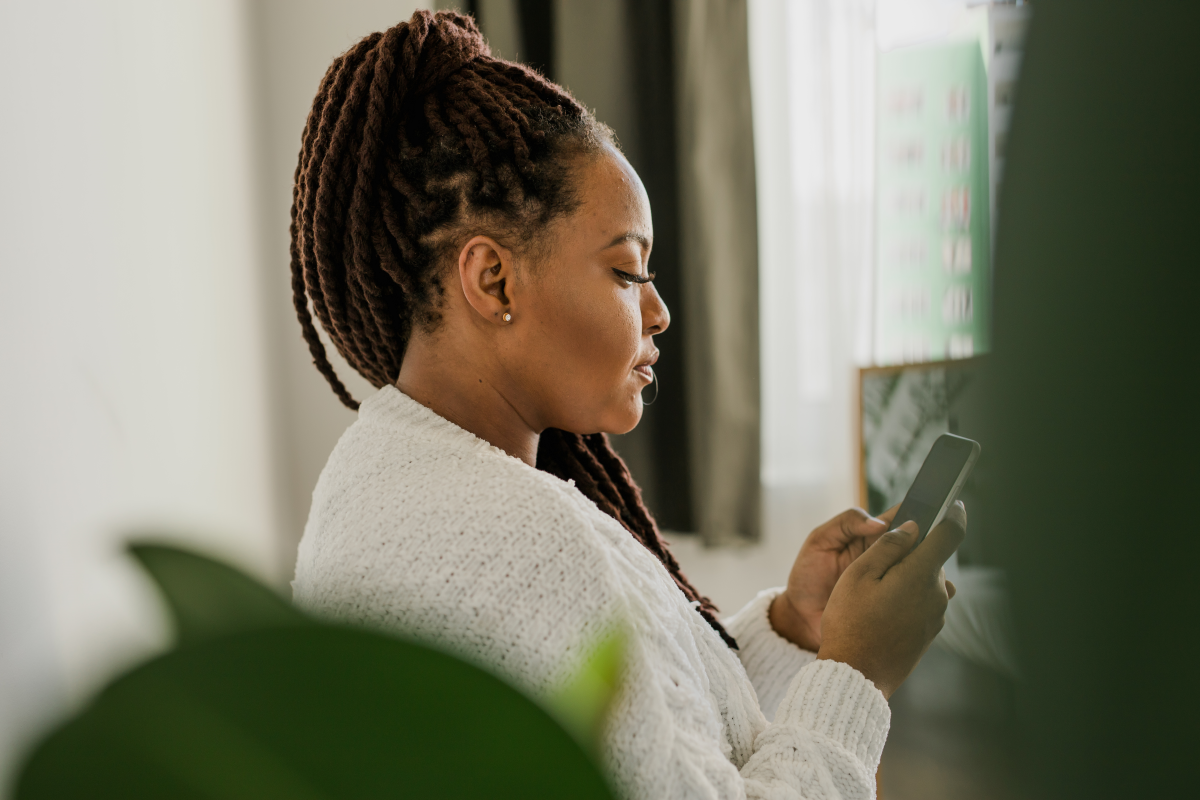How to Reduce Screen Time: 5 Proven Strategies for Adults
Five evidence-based strategies to help adults reduce screen time while improving mental health, sleep quality and productivity.

Understanding how to reduce screen time has become essential for adults as we now spend 6 hours and 40 minutes daily staring at screens, with Americans averaging even higher at 7 hours and 3 minutes per day. While technology enhances our lives in countless ways, this level of screen exposure is taking a serious toll on our mental health, sleep quality, and overall well-being.
Reducing screen time isn’t about completely disconnecting from technology—it’s about creating healthier boundaries that allow you to reclaim control over your time and attention.
Studies show that adults who successfully reduce their screen time report improvements in sleep quality, reduced anxiety levels, and enhanced focus throughout the day. The good news? You don’t need to go completely offline to experience these benefits.
Why Adults Struggle with Screen Time Reduction
Before diving into solutions, it’s important to understand why reducing screen time feels so challenging for adults. Unlike teenagers who primarily use devices for entertainment, adults face unique obstacles:
1.| Work Demands: Many professionals spend 8+ hours daily on computers, making it difficult to distinguish between necessary and excessive screen use.
2.| Information Overload: Adults often feel compelled to stay informed about news, work updates, and family communications, leading to constant phone checking.
3.| Stress Relief Habit: After demanding days, many adults turn to screens for relaxation, creating a cycle where stress leads to more screen time.
4.| Social Connectivity: Maintaining relationships through social media and messaging apps can make digital boundaries feel like social isolation.
Understanding these challenges is the first step toward developing realistic strategies that work with your lifestyle, not against it.
5 Proven Strategies to Reduce Screen Time
Strategy 1| Create Digital Boundaries That Actually Work
The most effective approach to reducing screen time starts with establishing clear, non-negotiable boundaries around when and where you use devices.
Implement Device-Free Zones: Create specific areas in your home where screens aren’t allowed. The bedroom is particularly important—research shows that using devices before bed disrupts sleep quality by interfering with your natural circadian rhythm.
Establish Time-Based Rules: Set specific hours when screens are off-limits. Many successful adults implement a “no screens after 9 PM” rule or create screen-free mornings until after breakfast.
Use the 20-20-20 Rule: Every 20 minutes, look at something 20 feet away for 20 seconds. This eye care practice recommended by optometrists reduces eye strain and creates natural breaks in your screen time.
Practice Mindful Device Use: Before picking up your phone, pause and ask: “What specific task am I trying to accomplish?” This simple question eliminates mindless scrolling and keeps screen time purposeful.
Strategy 2| Master Built-in Screen Time Controls
Both iOS and Android devices now include powerful screen time management tools that most adults underutilize. These built-in features are often more effective than third-party apps because they’re integrated into your device’s core functionality.
Set Up App Time Limits (With a Twist): Configure daily time limits for your most problematic apps. Start with generous limits and gradually reduce them by 15 minutes weekly until you reach a comfortable level.
Here’s a game-changing strategy: Instead of entering the override passcode yourself, have someone else set it for you—a family member, partner, or close friend. This way, you won’t know the code, making it impossible to easily bypass your limits when temptation strikes. Just ensure you can contact them in case of a real emergency. And if you’re particularly persuasive, instruct them not to budge no matter how convincing your arguments might be!
Use Focus Modes Strategically: iOS Focus modes and Android’s Do Not Disturb features can be customized for different parts of your day. Create a “Work Focus” that blocks social media and a “Sleep Focus” that silences all non-emergency notifications.
Schedule Downtime: Both platforms allow you to schedule periods when only essential apps are available. Use this feature to create automatic boundaries during meals, family time, or before bed.
Review Weekly Reports: Check your weekly screen time reports every Sunday. This data helps you identify patterns and make informed adjustments to your digital habits.
Strategy 3| Schedule Regular Digital Detox Periods
Complete digital detoxes don’t have to be extreme to be effective. Short, regular breaks from screens can be more sustainable and beneficial than occasional long detoxes.
Start with Micro-Detoxes: Begin with 30-minute screen-free periods daily. Use this time for activities that engage your hands and mind—cooking, gardening, or playing a musical instrument.
Implement Weekly Digital Sabbaths: Designate one morning or afternoon each week as completely screen-free. Use this time for activities that bring you joy and relaxation without digital stimulation.
Plan Screen-Free Activities: Replace your default screen time with specific alternatives. Instead of browsing social media during lunch, take a walk outside. Replace evening TV watching with reading or calling a friend.
Inform Your Network: Let family, friends, and colleagues know about your digital detox periods. This reduces anxiety about missing important communications and helps others respect your boundaries.
Strategy 4| Replace Screen Time with Intentional Activities
The key to sustainable screen time reduction isn’t willpower—it’s replacement. Having engaging alternatives ready makes it easier to choose non-screen activities when you’re tempted to scroll mindlessly.
Develop a Physical Hobby: Engage in activities that require your hands and full attention. Cooking, dancing, roller skating, crafting, gardening, or playing an instrument naturally prevent phone use while providing satisfaction and stress relief.
Prioritize Face-to-Face Connections: Schedule regular in-person activities with friends and family. Board game nights, walking groups, or cooking together create natural screen-free environments while strengthening relationships.
Rediscover Reading: Keep physical books or magazines easily accessible. Reading engages your mind similarly to digital content but without the addictive elements of social media algorithms.
Practice Mindfulness Activities: Meditation, yoga, or simple breathing exercises provide the mental break that many people seek from screens, while offering additional stress-reduction benefits.
Strategy 5| Leverage Screen Time Management Apps Wisely
While built-in controls are often sufficient, certain third-party apps can provide additional support for adults serious about reducing their screen time.
Forest App: Uses gamification to help you stay focused by growing virtual trees during screen-free periods. The app’s social features allow family members to work together on digital wellness goals.
Freedom: Blocks distracting websites and apps across all your devices simultaneously, making it harder to switch between devices when one is restricted.
One Sec: Designed to stop endless scrolling by requiring you to take a deep breath before opening social media apps, reducing impulsive usage through intentional friction.
Remember, the goal isn’t to use technology to completely avoid technology, but to create helpful guardrails that support your broader wellness goals.
Expert-Recommended Books on Digital Wellness
Sometimes the best way to understand and overcome screen addiction is to learn from experts who’ve studied this phenomenon extensively. These books offer deeper insights and additional strategies for reclaiming your relationship with technology:
The Shallows: What the Internet Is Doing to Our Brains by Nicholas Carr. An exploration of how internet usage is literally rewiring our brains and affecting our ability to concentrate and think deeply.
How to Break Up with Your Phone by Catherine Price. A 30-day plan designed to help you reduce your phone dependence and reclaim your life, backed by research on how smartphones affect our brains.
Digital Madness: How Social Media Is Driving Our Mental Health Crisis – And How To Restore Our Sanity by Nicholas Kardaras, Ph.D. A clinical psychologist examines the connection between social media use and rising mental health issues, offering evidence-based strategies to break free from digital addiction and restore psychological well-being.
Digital Minimalism: Choosing a Focused Life in a Noisy World by Cal Newport Newport. provides a philosophy for intentional technology use, offering practical steps to declutter your digital life and focus on what truly matters.
Irresistible: The Rise of Addictive Technology and the Business of Keeping Us Hooked by Adam Alter. A fascinating look at how technology companies design apps and devices to be addictive, plus strategies for resistance.
These books complement the practical strategies in this guide with deeper understanding of the psychology behind screen addiction and additional techniques for digital wellness.
Science-Backed Benefits of Reducing Screen Time
Understanding the concrete benefits of reduced screen time can provide motivation during challenging moments in your digital wellness journey.
Improved Sleep Quality
Excessive screen time, particularly in the evening, disrupts your circadian rhythm by suppressing melatonin production. Research from Harvard Medical School shows that blue light exposure before bed can delay sleep onset and reduce sleep quality.
The blue light emitted by screens tricks your brain into thinking it’s daytime, making it harder to wind down naturally. Creating screen-free bedtime routines can lead to deeper sleep cycles and more energy the following day.
Enhanced Mental Health
Research consistently shows connections between excessive screen time and mental health concerns. A study published in Preventive Medicine found associations between high social media use and increased symptoms of anxiety and depression in adults.
Social media comparison, negative news consumption, and information overload can all contribute to elevated stress levels. Many adults find that limiting recreational screen time helps them feel more present in their daily lives and less anxious about constant connectivity.
Increased Productivity and Focus
Constant notifications and device switching can fragment your attention span. Research from the University of California, Irvine found that it takes an average of 23 minutes to fully refocus after being interrupted by digital distractions.
The practice of single-tasking—focusing on one activity without digital distractions—can strengthen your brain’s ability to concentrate, leading to improved performance in both professional and personal endeavors.
Stronger Real-World Relationships
Face-to-face conversations without device distractions lead to deeper connections and improved communication skills. Many adults find that reducing screen time during social interactions significantly improves the quality of their relationships.
Families who implement screen-free meals and activities report feeling more connected and having more meaningful conversations about their daily experiences and future goals.
Getting Started: Your 7-Day Screen Time Reduction Plan
Implementing all these strategies at once can feel overwhelming. This week-by-week approach helps you build sustainable habits gradually.
Days 1-2: Awareness and Baseline
- Enable screen time tracking on all devices
- Keep a simple log of when you reach for your phone and why
- Don’t make any changes yet—just observe your current patterns
Days 3-4: Create Physical Boundaries
- Remove phones from the bedroom
- Establish one device-free zone in your home
- Place your phone in another room during meals
Days 5-6: Set Digital Boundaries
- Configure your first app time limits (start generous)
- Set up a “Sleep” focus mode that activates 1 hour before bed
- Turn off non-essential notifications
Day 7: Plan Your Replacements
- Choose 2-3 activities to replace your most common screen time habits
- Stock your home with alternatives (books, puzzles, craft supplies)
- Schedule one screen-free activity for the following week
Week 2 and Beyond
Continue building on these foundations by gradually tightening app limits, extending screen-free periods, and adding more intentional activities to replace digital habits.
Conclusion
Learning how to reduce screen time as an adult isn’t about rejecting technology—it’s about using it more intentionally to support your overall well-being. The strategies outlined in this guide have helped thousands of adults reclaim their time, improve their sleep, and strengthen their real-world relationships.
Start small, be patient with yourself, and remember that the goal is progress, not perfection. Even modest reductions in screen time can lead to significant improvements in your mental health, productivity, and life satisfaction.
Your relationship with technology should enhance your life, not control it. By implementing these evidence-based strategies, you’re taking an important step toward a more balanced, intentional approach to digital wellness.
Ready to take your wellness journey further? Radiant Health Magazine has been providing trusted health and wellness guidance to Black Women for over 10 years. Explore our latest issue for more evidence-based approaches to living your healthiest life.

